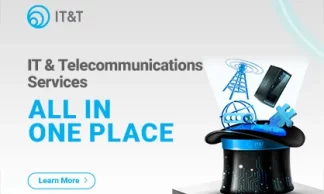Choosing the right networking tech for your company
If your organisation’s current network infrastructure is not keeping pace with operational, geographic and strategic demands, it’s probably time to review the different types of Wide Area Network (WAN) now available. The WAN you are using may not be the best one for your current and future needs.
A comparison of the most popular types of WAN solutions
Traditional WAN
A conventional WAN solution connects the Local Area Networks (LANs) of multiple locations (e.g. in retail, hospitality and healthcare) using routers and Virtual Private Networks (VPNs). Relying on Multiprotocol Label Switching (MPLS), it can provide direct and secure connections for network traffic flow, as well as the ability to prioritise traffic.
MPLS
A long-established network connectivity method, MPLS is a type of VPN able to connect data centres and branch offices, and assign efficient routes for IP data packets to wing their way around the internet. Real-time voice and data traffic, for example, can be mapped to a route that will deliver minimum delay, but the route is predetermined and making changes is difficult. It's a technique designed to overlay existing technology and improve its performance. Its drawbacks are that it is expensive to run and time-consuming to set-up, extend or modify.
SD-WAN
Software Defined Wide Area Networking (SD-WAN) is a newer WAN solution, a less expensive and less complex alternative to traditional WAN. SD-WAN network control processes are available as software rather than being driven by hardware, resulting in greater flexibility. Like MPLS, SD-WAN can overlay existing technology, making integration with your current systems easier. Although it eliminates the need for MPLS – delivering connectivity via high-speed broadband or DSL – it can also operate alongside an MPLS network, providing a path for gradually migrating to full SD-WAN.
SD-branch
Taking a further step by adding another layer to SD-WAN, in the shape of SD-branch networking technology, means that all IT infrastructure located in multiple branch locations (e.g. hardware, software, gateways, firewalls and security) can be managed and serviced from your headquarters, reducing the need to send out a technician to install equipment or fix problems.
Business opportunities made available by SD-WAN
SD-WAN, overlaid by SD-branch, delivers:
- Routing of network traffic based on priorities for data, voice and video
- Improved connectivity to the cloud
- Quick and easy connection of new remote sites
- Easier centralised management of branch office IT functions
- Management of multiple connections, e.g. Ethernet, FTTP, DOCSIS, 4G LTE, etc
- Better network security and segmentation resulting from the ability to partition and protect crucial or sensitive network traffic
- Reduced costs when compared with traditional WAN and MPLS
What to look for in an SD-WAN
When choosing an SD-WAN solution that's a good fit for your organisation, you'll need to consider your specific strategic and technical needs.
Are you using in-house software or SaaS?
Do you want to improve your network efficiency and resilience while simplifying the experience for the user?
Are you looking for more robust security?
And is your CFO grumbling about the cost of your current system?
You're going to need an SD-WAN that answers many, if not all, of these needs:
Cloud-based orchestration
To optimise your use of SaaS, look for a solution offering data centre, public cloud and multiple branch gateways, using VPNs, MPLS and 4G LTE. Ideally, there should be a cloud connection dashboard, such as the one provided by Aruba Cloud Connect, to integrate the SD-WAN with Amazon AWS, Microsoft Azure, and other cloud vendors.
Efficiency gains
To access full hardware performance capabilities, plan ahead when negotiating upstream connection speeds and dedicated bandwidth. Your chosen solution should also be able to scale horizontally via additional future connectivity.
Resilience
An SD-WAN should reduce network downtime by detecting outages in real time and deploying automatic failover to working links. The solution should also be able to rebroadcast any BGP (Border Gateway Protocol) advertisements to the new link.
Simplicity
New network devices at branch locations should be able to be installed by onsite non-tech employees. Aruba SD-WAN, for example, has an installer mobile app to deliver Zero Touch Provisioning and seamless integration with Aruba Central, so that remote sites get up and running quickly.
Network security
Essential features of a secure SD-WAN include:
- Automated, consistent and dynamic segmentation of data and a Policy Enforcement Firewall, in both cases according to user, location, device, data type and application.
- Firewall logging to display the effectiveness of firewall rules across the network
- Application visibility and control to evaluate and optimise the performance of a wide range of apps
- Web content filtering to rate websites by content, category and reputation
- intrusion Detection and Intrusion Prevention (IDS/IPS) to provide threat metrics, intelligence data and incident management, as well as DPI (Deep Packet Inspection) to ensure end-user safety
Cost reduction
Switching from costly MPLS lines to consumer broadband technology or 4G LTE results in lower connectivity costs. SD-WAN improves access to cloud computing, making SaaS more viable, eliminating upfront software purchase costs and delivering increased scalability. Additionally, technical support costs are likely to be reduced, since equipment and systems located remotely can be more easily managed and serviced centrally.
Find out how your organisation can benefit from SD-WAN
There’s an SD-WAN solution for every size of the enterprise in need of a WAN. If you feel that the time has come for your business to benefit from the opportunities and benefits presented by SD-WAN, we can put you in touch with one of our IT infrastructure experts for more details and advice tailored to your needs.






